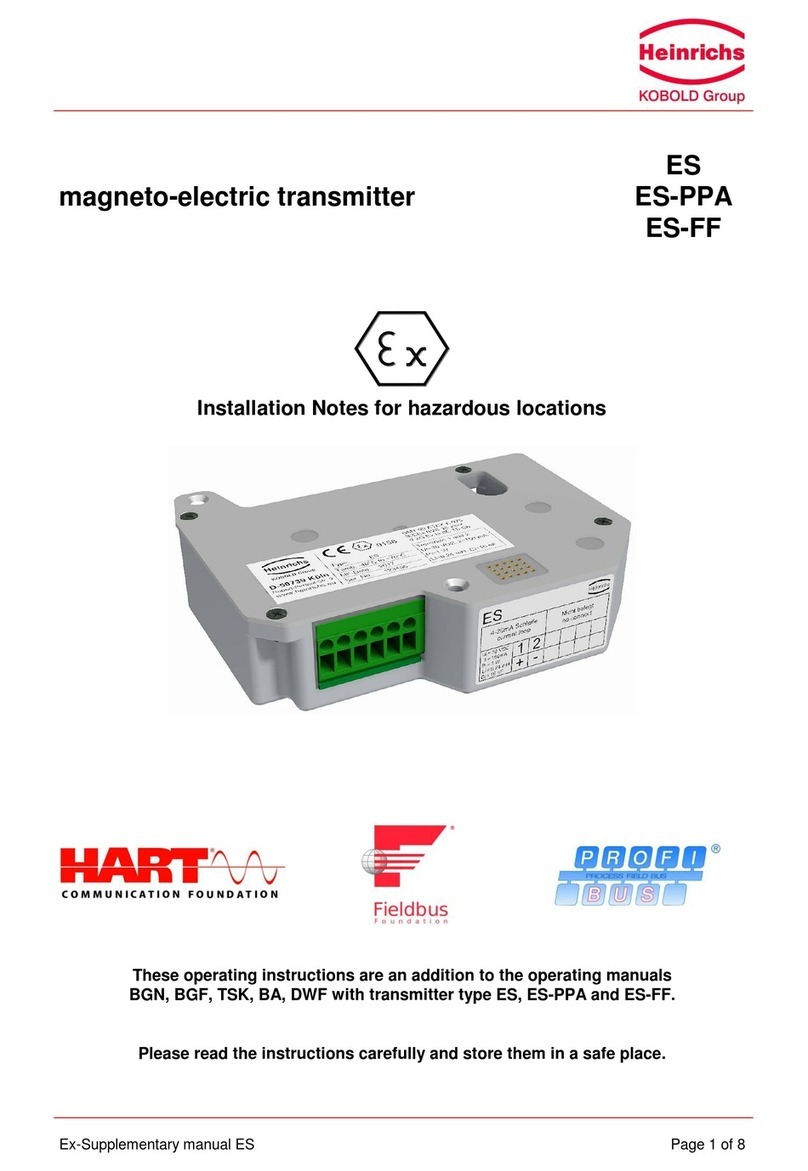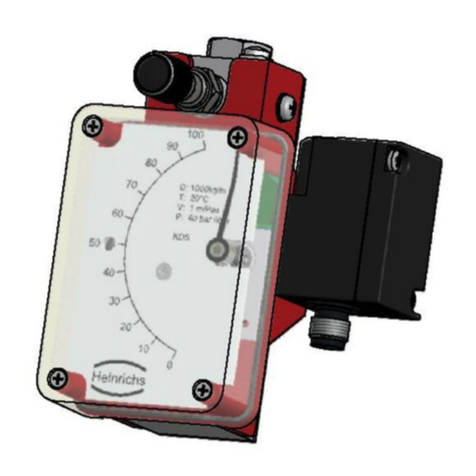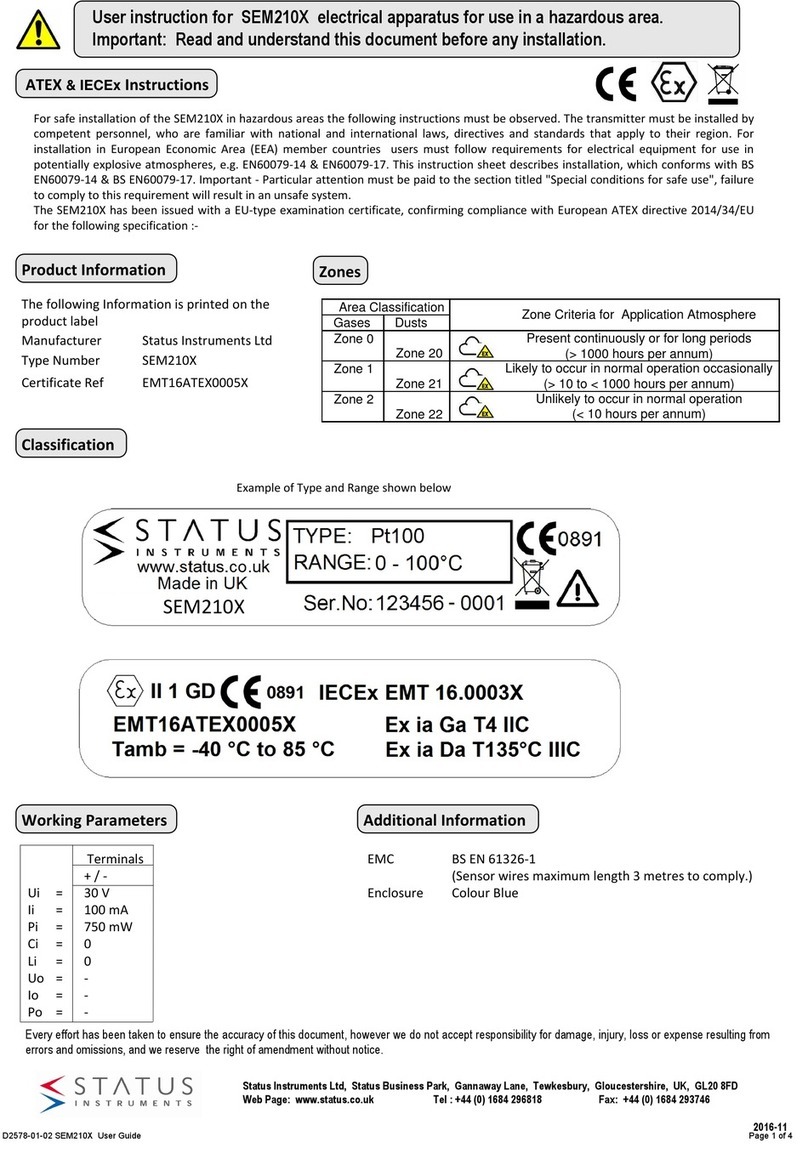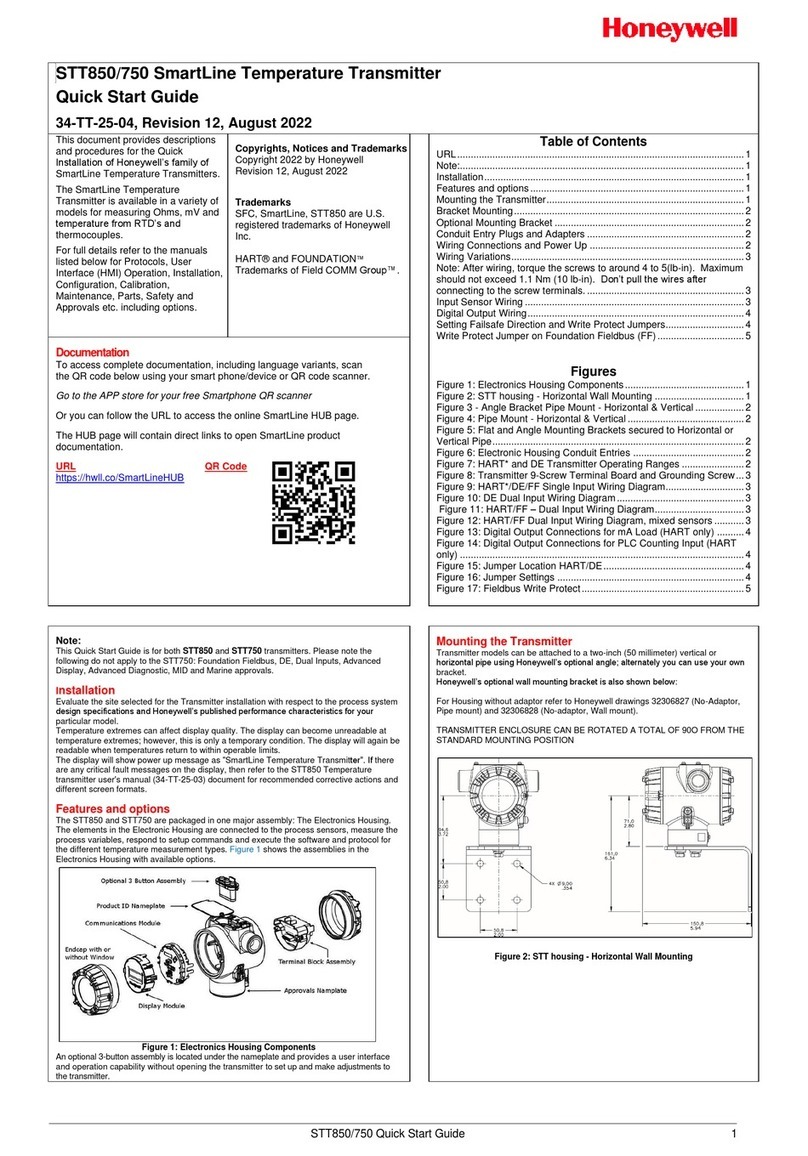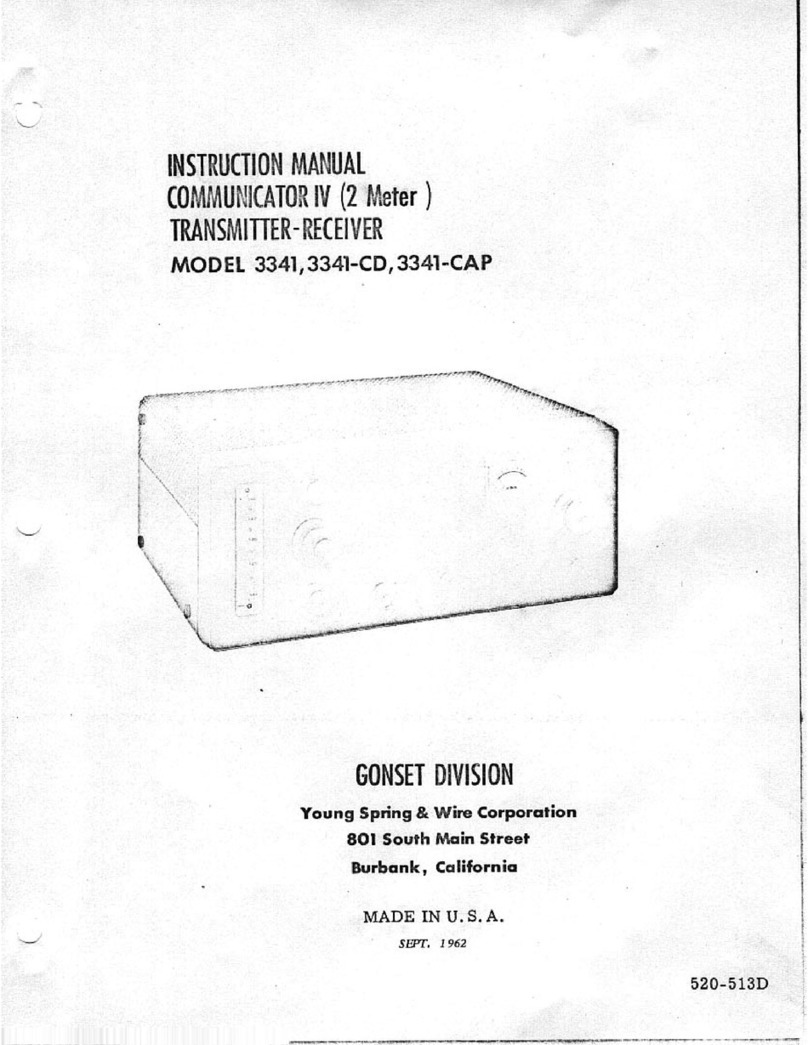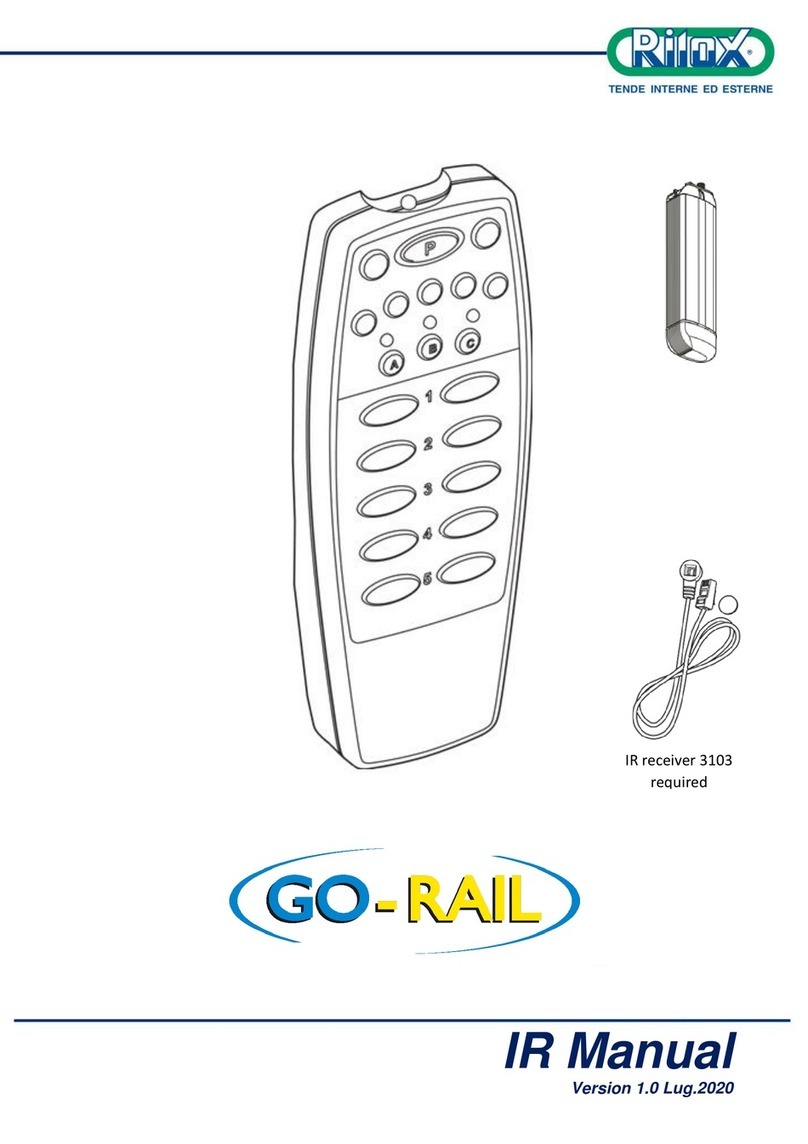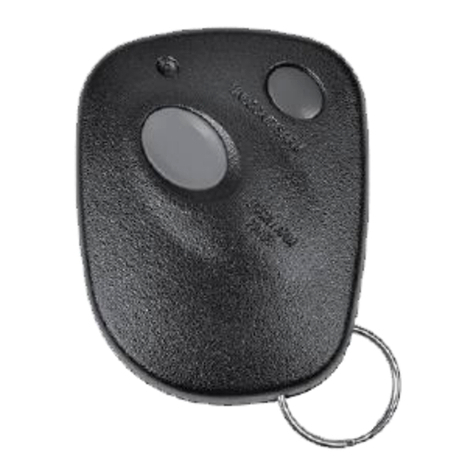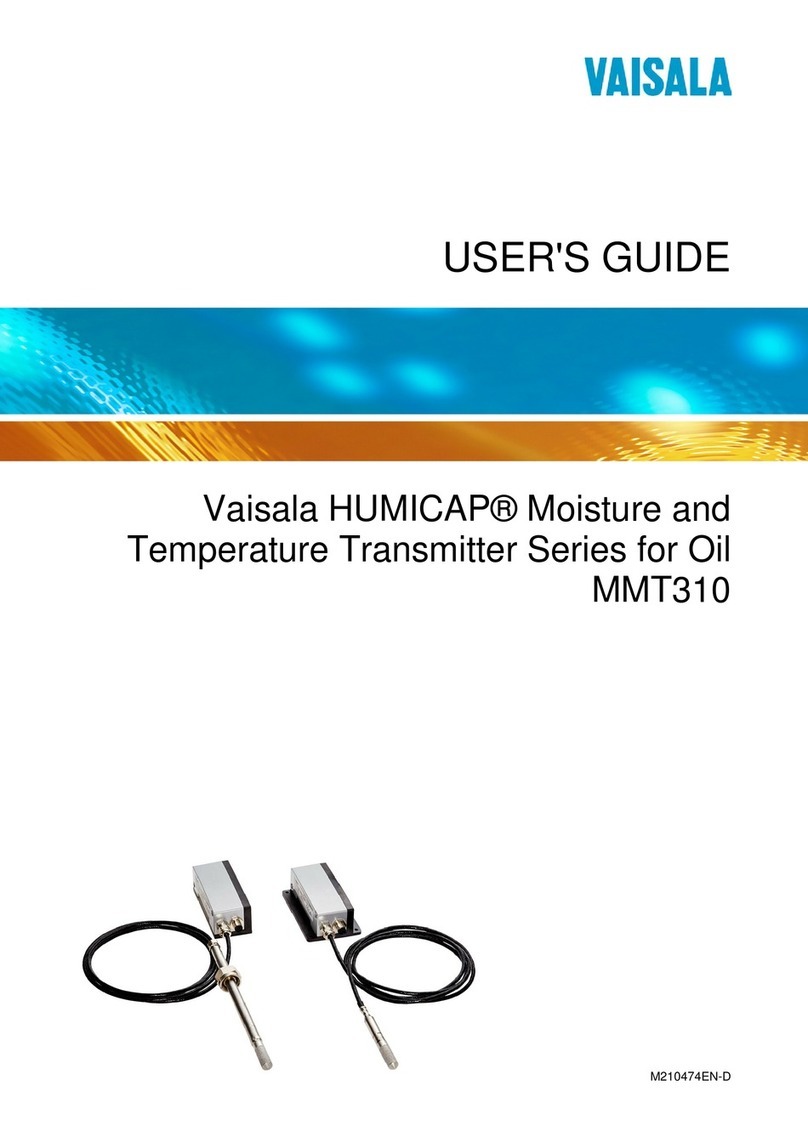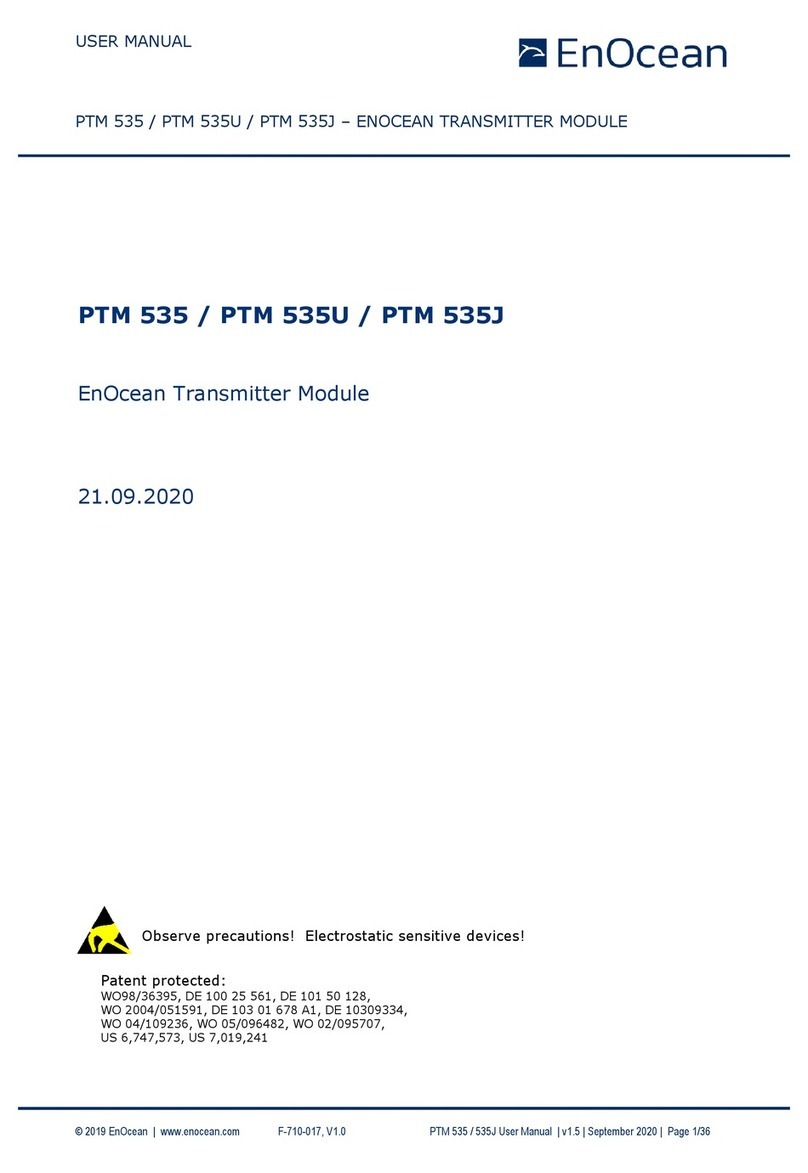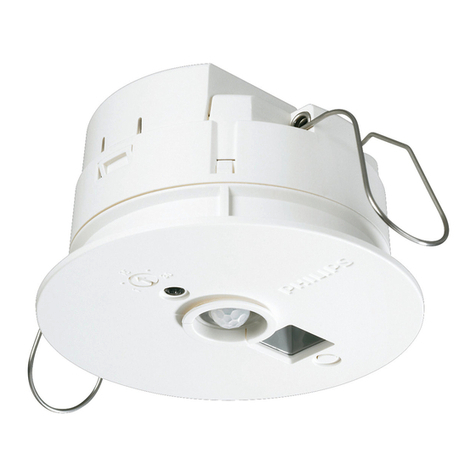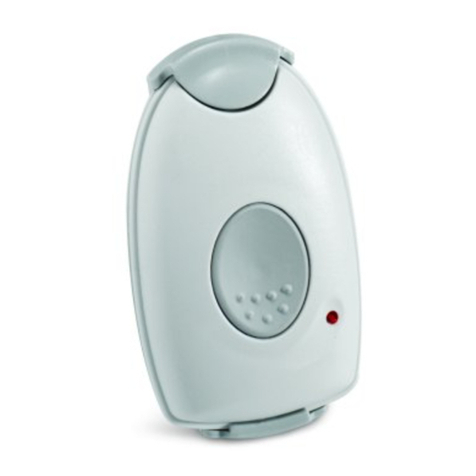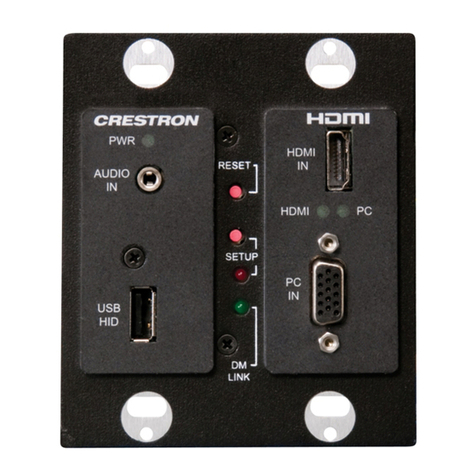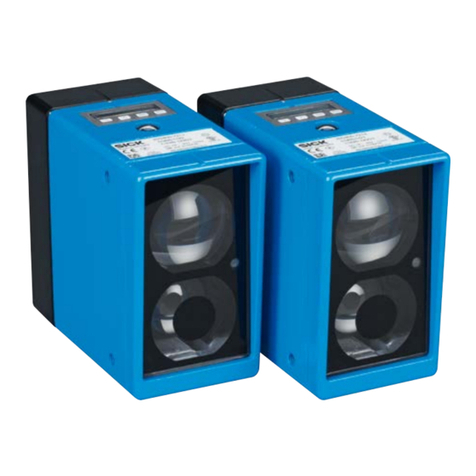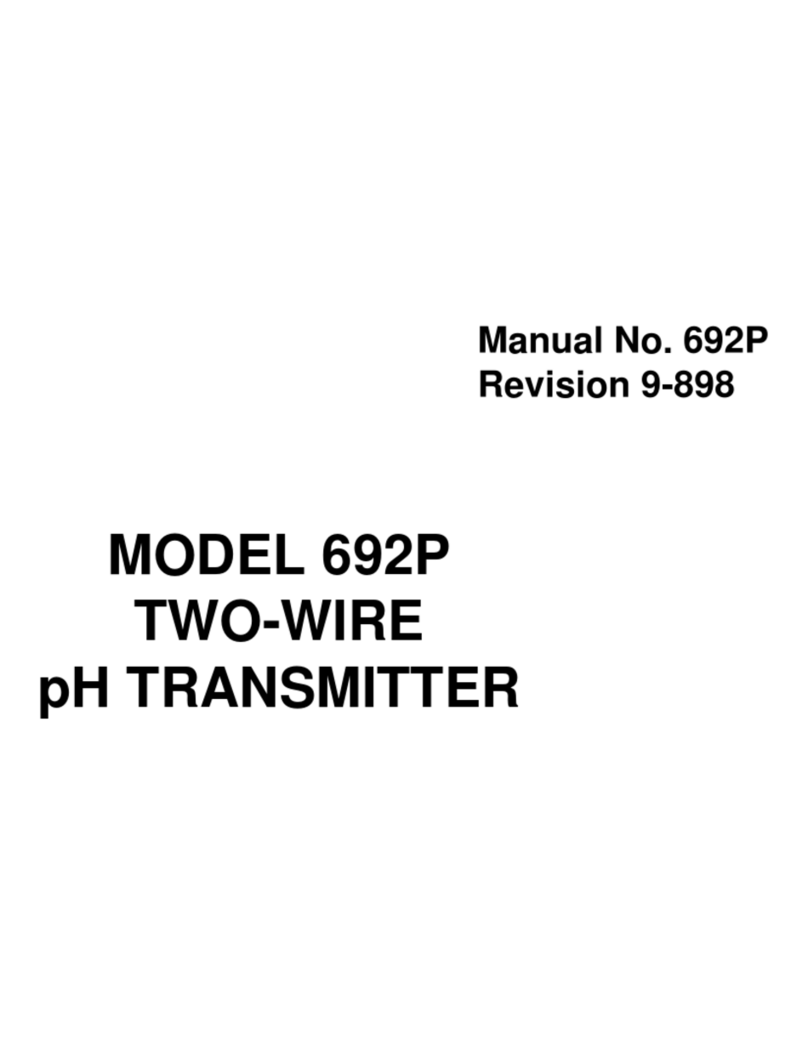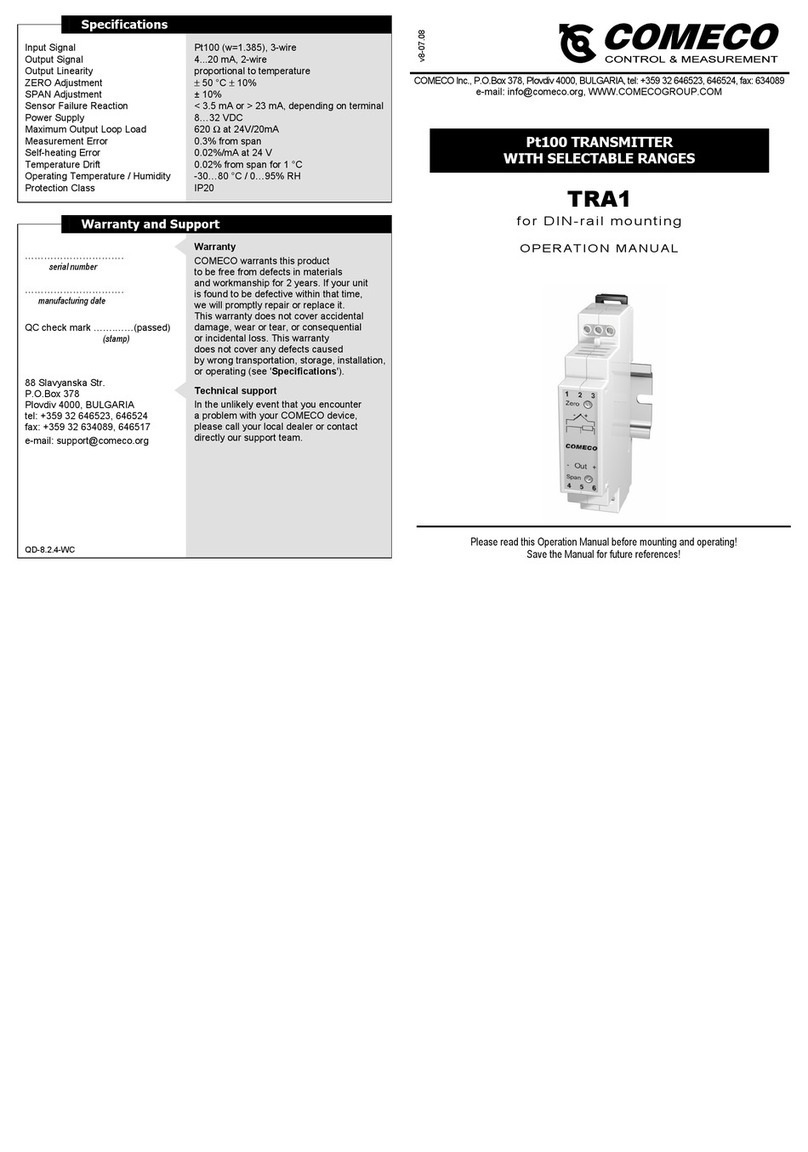Heinrichs KDSE User manual

Safety Instructions KDSE
Page 1 of 11
Additional Operating Manual
Safety Instructions
Please read the instructions carefully and store them in a safe place.
Electronic transmitter
KDSE
ATEX

Page 2 of 11
Safety Instructions KDSE
CONTENTS
Introduction......................................................................................................................3
I. Shipping and storage; product inspection.........................................................................................3
II. Warranty ...........................................................................................................................................3
III. Validity of this operating manual.......................................................................................................3
1. Steps prior to operation.........................................................................................4
1.1 Installation, mounting, commissioning and maintenance .................................................................4
1.2 Hazard warnings...............................................................................................................................4
1.2.1 Danger........................................................................................................................................ 4
1.2.2 Warning...................................................................................................................................... 4
1.2.3 Caution ....................................................................................................................................... 4
1.2.4 Note............................................................................................................................................ 4
2. Identification..........................................................................................................5
2.1 Version / date....................................................................................................................................5
3. General information about explosion protection....................................................6
4. Applications...........................................................................................................7
5. Operational mode and system design...................................................................7
6. Electrical connection .............................................................................................8
6.1 Electrical and thermal parameters....................................................................................................8
7. Special conditions for safe use .............................................................................9
7.1 Environmental influences on the electronics.....................................................................................9
7.2 Atmospheric conditions.....................................................................................................................9
7.3 Ground connection............................................................................................................................9
7.4 Electrostatic charge of non-conductive parts....................................................................................9
7.5 Mechanical strength..........................................................................................................................9
8. Marking ...............................................................................................................10
9. Declaration of conformity ....................................................................................11
Note on numbering format
Owing to the technical limitations of our computer operating system and the tabular calculation software
used for the present document, numbers are shown in the continental European format rather than in
the standard anglophone manner, i.e. commas are used in lieu of decimal points and vice versa.
For example:
Anglophone format: 1,000.00
Continental European format: 1.000,00
In the transmitter display, however, numbers that are four or more digits long are shown without separat-
ing commas but with decimal points, as follows.
Example: 1000.00

Safety Instructions KDSE
Page 3 of 11
Introduction
I. Shipping and storage; product inspection
The device is to be safeguarded against moisture, dirt, impact and damage.
Product inspection
Upon receipt of the product, the consignment should be checked for completeness. The data of the de-
vice have to be compared with the packing slip and the order documents
Notify us of any shipping damage immediately upon receipt of the product. Any damage claim received at
a later time will not be honored.
II. Warranty
Your flow meter was manufactured in accordance with the highest quality standards and was thoroughly
tested prior to shipment. However, in the event any problem arises with your device, we will be happy to
resolve the problem for you as quickly as possible under the terms of the warranty which can be found in
the terms and conditions of delivery. Your warranty will only be honored if the device was installed and
operated in accordance with the instructions for your device. Any mounting, commissioning and/or
maintenance work is to be carried out by qualified and authorized technicians only.
III. Validity of this operating manual
The present instructions apply to explosion-proof transmitter type KDSE as of year of
construction August 2012 or later and serial number 290000 or bigger. These instruc-
tions are supplementary operating manual for non-explosion proof meters. If you do not
have a copy of the latter instructions, please request one from Heinrichs Messtechnik
GmbH or download the instructions from our website.
The instructions herein pertain primarily to explosion proof magnetic-inductive flow meters. The technical
data in the mounting and operating instructions for non-explosion proof magnetic-inductive flow meters
still apply insofar as the present instructions do not replace them or exclude their application.

Page 4 of 11
Safety Instructions KDSE
1. Steps prior to operation
Prior to installation and operation, it is essential that the operator familiarizes himself
with all of the instructions and information contained in the manual for non-explosion
proof as well as the present instructions. If any part of either manual is missing, con-
tact Heinrichs Messtechnik GmbH to request a new manual. These manuals can
also be downloaded from our website.
1.1 Installation, mounting, commissioning and maintenance
Installation, mounting, commissioning and maintenance are to be performed by a technician trained to
work with explosion-proof devices, or by a Heinrichs Messtechnik service technician.
Warning
Any maintenance or repair that safety relevant in terms of explosion-protection is to be
carried out by the manufacturer, an authorized Heinrichs Messtechnik GmbH service cen-
ter or under the supervision of an expert in explosion proof devices.
Heinrichs Messtechnik GmbH accepts no liability for any loss or damage of any kind arising from
improper operation of any product, improper handling or use of any replacement part, or from
external electrical or mechanical effects, overvoltage or lightning. Any such improper operation,
use or handling shall automatically invalidate the warranty for the product concerned.
In the event of a problem please contact the service center of Heinrichs Messtechnik:
Phone: +49 221 49708-0
Fax: +49 221 49708-178
Contact our customer service department if your device needs repair or if you need assistance in diagnos-
ing a problem with your device.
1.2 Hazard warnings
The purpose of the hazard warnings listed below is to ensure that device operators and maintenance per-
sonnel are not injured and that the flow meter and any devices connected to it are not damaged.
The safety advisories and hazard warnings in the present document that aim to avoid placing operators
and maintenance personnel at risk and to avoid material damage are prioritized using the terms listed
below, which are defined as follows in regard to the instructions herein and the advisories pertaining to the
device itself.
1.2.1 Danger
Means that failure to take the prescribed precautions will result in death, severe bodily injury, or substan-
tial material damage.
1.2.2 Warning
Means that failure to take the prescribed precautions could result in death, severe bodily injury, or sub-
stantial material damage.
1.2.3 Caution
Means that light bodily injury or damage to assets can occur if the safety alert is ignored.
1.2.4 Note
Means that the accompanying text contains important information about the product, handling the product
or about a section of the documentation that is of particular importance.

Safety Instructions KDSE
Page 5 of 11
2. Identification
Manufacturer
Heinrichs Messtechnik GmbH
Robert-Perthel-Straße 9
D-50739 Köln
Phone: +49 221 49708-0
Fax: +49 221 49708-178
Internet: http://www.heinrichs.eu
E-mail: [email protected]
2.1 Version / date
Version: KDSE-EX_BA_00_EN.DOC
Dated: August / 06 / 2012

Page 6 of 11
Safety Instructions KDSE
3. General information about explosion protection
In accordance with guideline 94/9/EG (ATEX)
acc. EN / IEC 60079-0 ff
Example designation
0158
II
2G
Ex
d e [ia]
IIC
T6
Gb
Equipment groups
I
Equipment group I applies to equipment intended for use in un-
derground parts of mines as well as those parts of surface installa-
tions of such mines endangered by firedamp and/or combustible
dust.
II
Equipment group II applies to equipment intended for use in other
places liable to be endangered by explosive atmospheres. This
group is subdivided into three categories.
Equipment category
Designation
for gases
Designation
for dust
Definition
1G
(0)
1D
(20)
Equipment in this category is intended for use in areas in
which explosive atmospheres caused by mixtures of air and
gases, vapours or mists or by air/dust mixtures are present
continuously, for long periods or frequently.
2G
(1)
2D
(21)
Equipment in this category is intended for use in areas in
which explosive atmospheres caused by gases, vapours,
mists or air/dust mixtures are likely to occur.
3G
(2)
3D
(22)
Equipment in this category is intended for use in areas in
which explosive atmospheres caused by gases, vapours,
mists, or air/dust mixtures are unlikely to occur or, if they do
occur, are likely to do so only infrequently and for a short
period only.
(The numbers in round brackets correspond to the IEC Zones.)
Ex = Explosion-proof electrical equipment
Types of protection
General requirements
IEC 60079-0
„o“
Oil immersion
IEC 60079-6
„p“
Pressurized enclosure
IEC 60079-2
„q”
Sand filling
IEC 60079-5
„d“
Flameproof enclosure
IEC 60079-1
„e“
Increased safety
IEC 60079-7
„i“
Intrinsic safety (ia, ib)
IEC 60079-11
„n“
Non-incentive electrical equipment
IEC 60079-15
„m“
Encapsulation
IEC 60079-18
„s“
Special protection
IEC 60079-33
Explosion group
Examples: Gases and vapours
Minimum ignition power
[µJ]
IIA
Acetone, benzene, fuel oil, ethanoic acid
180
IIB
City gas, ethylene, isoprene
60
IIC
Acetylene, hydrogen, carbon bisulphide
20
Temperature classes
Maximum surface temperature
Temperature class
450 °C
842 °F
T1
300 °C
572 °F
T2
200 °C
392 °F
T3
135 °C
275 °F
T4
100 °C
212 °F
T5
85 °C
185 °F
T6
Equipment Protection Level (EPL)
Gas
Dust
“Very high” level of protection
Ga
Da
“High” level of protection
Gb
Db
“Enhanced” level of protection
Gc
Dc
Explosion protection designations [square brackets] refer to “Related electrical equipment or circuits.”

Safety Instructions KDSE
Page 7 of 11
4. Applications
The electronic module type KDSE is a transmitter with integrated magneto electric measuring element for
measurement of floater’s actual position or and transmission of actual pointer position into an electrical
signal.
The electronic module has to be assembled inside an enclosure with connector with a degree of protec-
tion of min. IP20 (EPL Gb) resp. IP54 (EPL Db). This enclosure and the connector should by sufficient for
the use (EPL).
5. Operational mode and system design
The microprocessor controlled KDSE transmitter is used in flowmeters series KDS and BGK. The position
of the float is transmitted to the pointer axle by means of a magnetic system. The KDSE measures the
field of a magnet mounted on the pointers axle and generates an output current of 4 to 20 mA from it. The
scale is generally non-linear and is linearized in the process with a minimum of 16 interpolation points.
This points and the measuring range is defined by manufacturer while calibrating the complete instrument.
The earth’ magnetic field and moderate homogeneous external magnetic fields are largely compensated.
Float magnet cause influence the transmitter KDSE’s measurement of pointer position. The correct cur-
rent output is supplied only if the pointing is moved by the float. Turning only the indicator leads to diver-
gent values, however, it permits a tendentious check of the instrument.

Page 8 of 11
Safety Instructions KDSE
6. Electrical connection
The electrical connection of the intrinsically safe 2-wire 4-20mA power supply and signal circuit is via an
M12 connector to pins 1 (+) and 3 (-).
This requires that the maximum electrical values (Ui, Ii, Pi, Li and Ci) are observed as described below.
6.1 Electrical and thermal parameters
Voltage Ui DC 30 V
Current Ii 150 mA
Effective internal inductance Li 0,24 mH
Effective internal capacitance Ci 15 nF
Power Pi in acc. with the following table:
Max. surface temperature for use in EPL Db 135 °C
When used in potentially explosive dust atmospheres, the device must be cleaned regularly in order to
avoid deposits exceeding 5 mm.
Use in
EPL Gb
EPL Db
Ambient temperature range
-40 °C up to +70 °C
-40 °C up to +40 °C
-40 °C up to +70 °C
Power Pi
1 W
750 mW
650 mW

Safety Instructions KDSE
Page 9 of 11
7. Special conditions for safe use
7.1 Environmental influences on the electronics
Environmental influences on the built-in transmitter type KDSE how the process temperature must be
taken into account. See Chapter 14 of the general operating instructions for the meter type or KDS BGK.
7.2 Atmospheric conditions
In accordance with EN 1127, a “potentially explosive atmosphere“ is defined as a mixture of air and com-
bustible gases, vapour, mist or dust under atmospheric conditions. Such conditions are defined in EN
13463-1, para. 1, with values Tatm = -20 °C to +60 °C and Patm = 0.8 to 1.1 bar. Outside this range, safe-
ty parameters for most ignition sources are not available.
Usually, variable-area flow meters operate under operating conditions outside the atmospheric conditions
of 0.8 to 1.1 bar. Irrespective of the zone classification –safety parameters of explosion protection –are
basically not applicable to the inside of the measuring tube.
Therefore operation with combustible products is only allowed if a potentially explosive air mixture is not
formed inside the flow meter. Where this condition is not met, the operator will need to assess the ignition
hazard in each individual case and give due consideration to existing parameters (e.g. pressure, tempera-
ture, process product, materials of construction for the measuring tube).
7.3 Ground connection
In variable-area flow meters, it is possible under operating conditions for charge separation to occur in the
measuring tube due to the transport of non-conductive fluids and/or when the flow comes into contact with
non-conductive internals (e.g. liners, floats).
For that reason, variable-area flow meters must be permanently grounded by the operator by way
of the process connections (flanges) in order to discharge electrostatic build-up. The operator is also re-
sponsible for extending the ground continuity of the process pipeline.
If grounding cannot be made via the process connections (plastic process connections or undefined con-
nections), the flow meter must be connected to the local ground potential via the flanges. This connection
only ensures electrostatic grounding of the device and does not meet the requirements for equipotential
bonding.
7.4 Electrostatic charge of non-conductive parts
In hazardous areas of protection class IIC pay attention to the risk of the electrostatic charge in a danger
threatening amount at cleaning works of the synthetic material housing and glasses.
Devices where explosive electrostatic charges can be expected to be generated due to cleaning
action are marked with an adhesive label:
WARNUNG- / WARNING-
Gefahr elektrostatischer
Aufladung! Nicht reiben!
Danger of electrostatic
charge! Do not rubb!
To clean these devices use a wet wipe.
7.5 Mechanical strength
The flow meters have undergone an impact test to EN 13463-1 for a low level of mechanical hazard.
Additional protective measures are required if there is a higher mechanical hazard level.

Page 10 of 11
Safety Instructions KDSE
8. Marking
Only devices with ex marking may be operated within the explosive atmospheres range.
The electronic module is marked as follows:
When the module is assembled in a variable area flow meter is additional a mark on the scale of the de-
vice.

Safety Instructions KDSE
Page 11 of 11
9. Declaration of conformity
K o n f o r m i t ä t s e r k l ä r u n g
Declaration of conformity
CE
Bezeichnung des Messgerätes: Umformer für Schwebekörper-Durchflussmesser
Type of measuring instrument: Transmitter for variable area flow meter
Typ / Type KDSE
Hiermit wird bestätigt, dass das Messgerät den Anforderungen der EG-Richtlinien 2004/108/EC und
94/9/EG einschließlich allen bis heute veröffentlichten Änderungen bzw. Nachträgen entspricht. Das
Messgerät entspricht folgenden Normen bzw. Richtlinien:
We do hereby certify that the above mentioned product meets the requirements set forth in Guideline
2004/108/EC and 94/9/EC including all changes and addendums to date thereto. The above mentioned
product meets the following standards and guidelines:
Richtlinie/ Guideline 2004/108/EC
EN 61000-6-2:2005 Störfestigkeit Industriebereich / immunity industrial environment
EN 61000-6-3:2007 Störaussendung Wohnbereich / emission residential, commercial
EN 55011:2007 Gruppe 1, Klasse B / ISM ratio-frequency equipment
EN61326-1:2006 EMV-Anforderungen (Elektrische Mess-,Steuer-,Regel- und Laborgeräte) -/
EMC requirements
Richtlinie / Guideline 94/9/EC
IEC 60079-0: 2011 Allgemeine Bestimmungen / General requirements
EN 60079-11: 2012 Eigensicherheit „i“ / Intrinsic safety „i“
Name und Anschrift der Benannten Stelle (94/9/EG): / Name and adress of the notified body (94/9/EC):
DEKRA EXAM GmbH
Dinnendahlstraße 9
D-44809 Bochum
Identifikationsnummer 0158
Köln, den 24.08.2012
i. A. Ignaz Urrigshardt
(Explosionsschutzbeauftragter)
Other manuals for KDSE
1
Table of contents
Other Heinrichs Transmitter manuals
